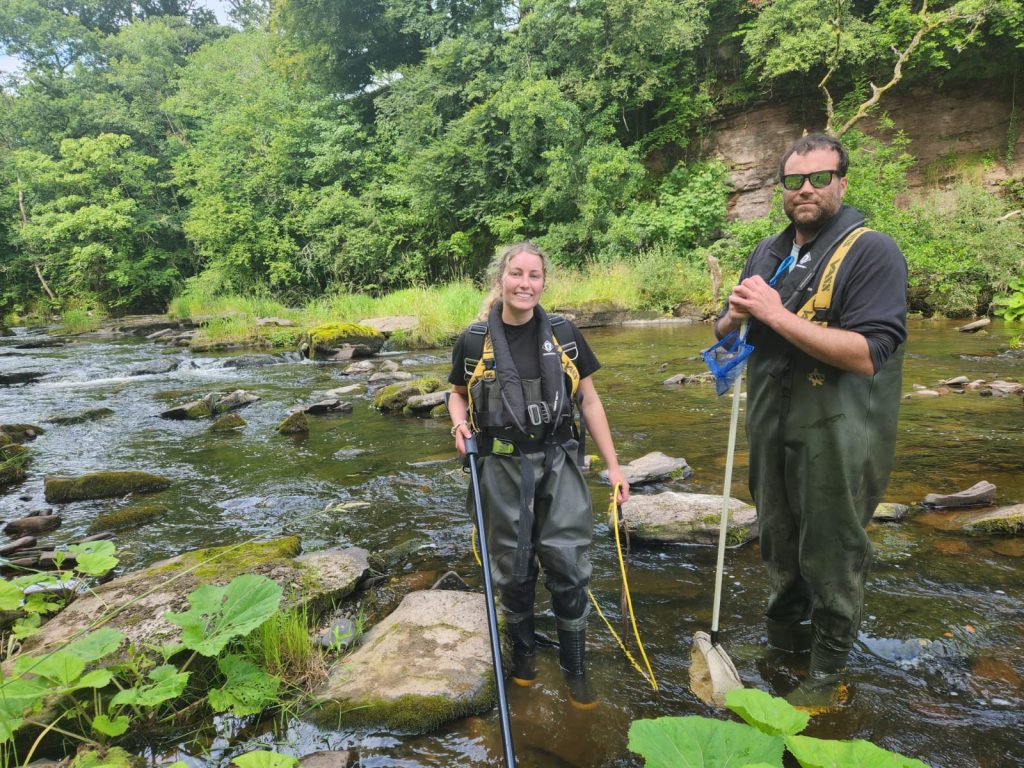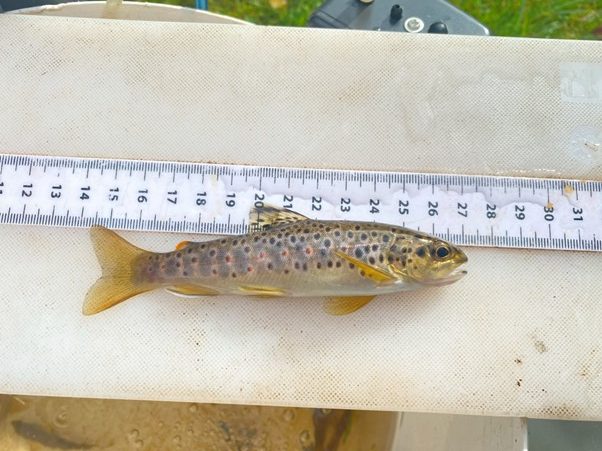

Loch Lomond Fisheries Trust strives to conserve the rivers within our catchment, using electrofishing we can understand the fragile dynamics of our rivers and is therefore a vital part of our work.
Electrofishing is the process of using a controlled electric current to temporarily stun fish in order to capture them. This technique is widely used by scientists and fisheries managers to survey rivers and assess the fish species present within them. While this sounds harmful, it is a safe practice that has been used to survey fish since the 1920s. Fish safety is always our top priority! We use the National Electrofishing Programme (NEPS) to guide our electrofishing practices.


Electrofishing is a technique which is best used to survey juvenile fish populations in the watercourses across the catchment. The species we focus on recording are salmonids such as salmon and trout. For each individual fish we record their species, size (from nose to the fork of the tail) and what life stage they are. We record every salmonid caught throughout the site. Each site we sample can look very different from another however, at each site we sample 100m2 of the river so all the sites are comparable.
All the data recorded throughout these surveys helps inform our conservation efforts. This information provides a vital insight into the fish populations within our rivers, including species composition, abundance and health. By monitoring changes in fish populations over time, our team can make informed decisions and create science backed strategies to protect and restore river ecosystems.